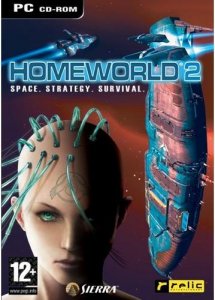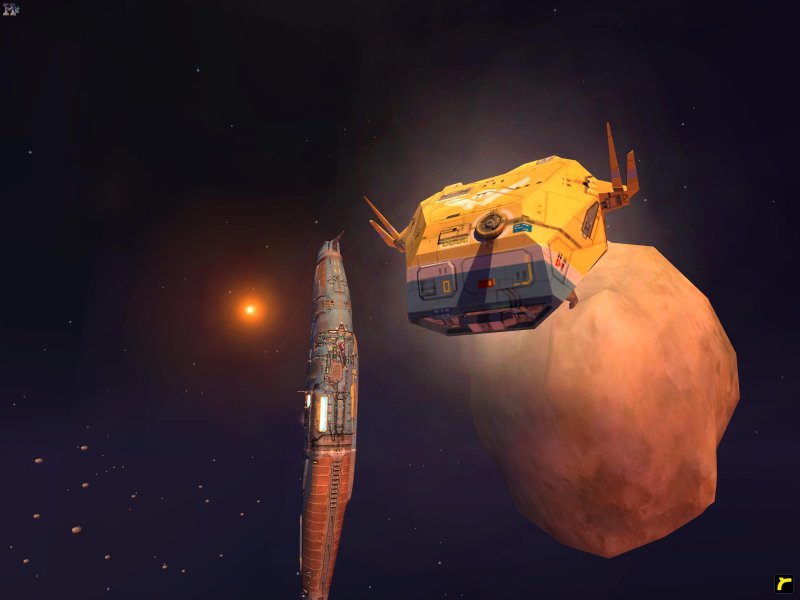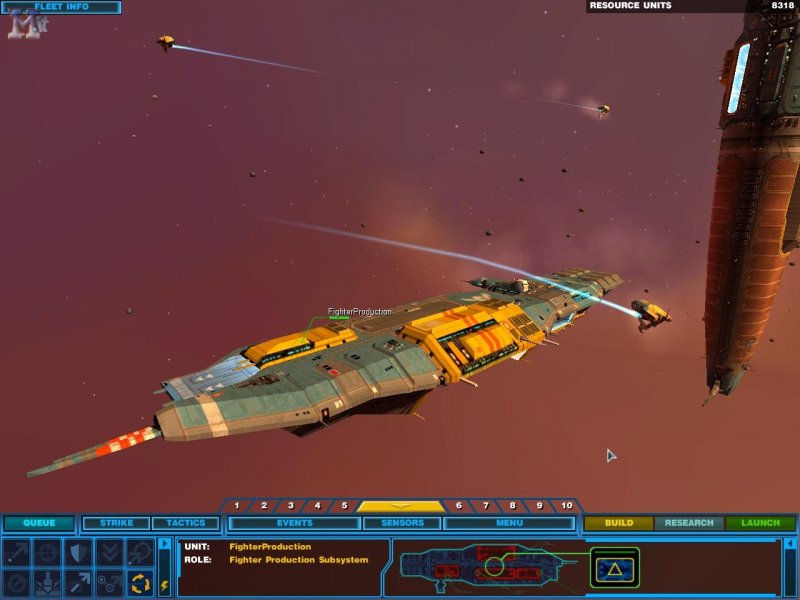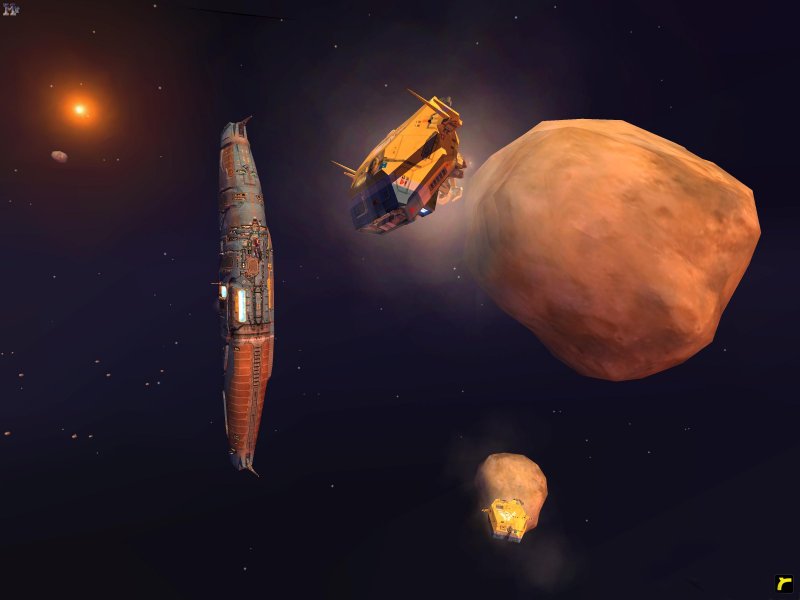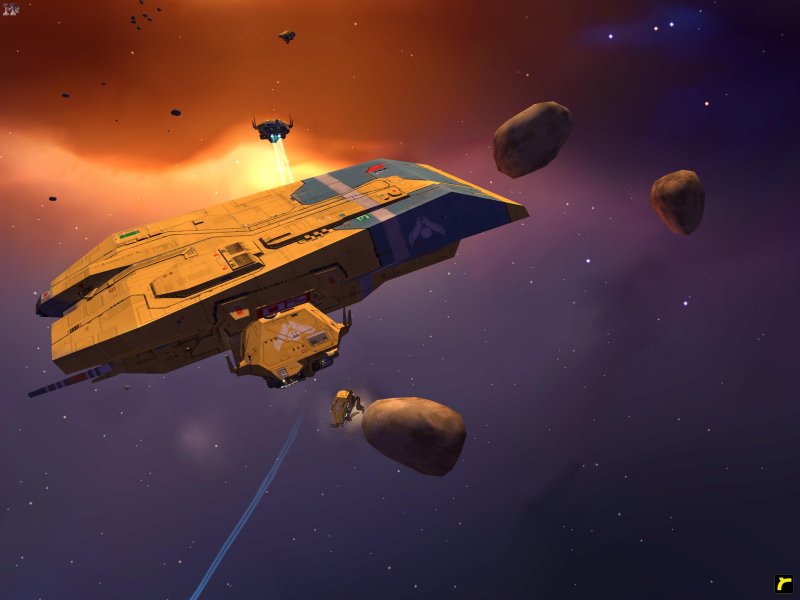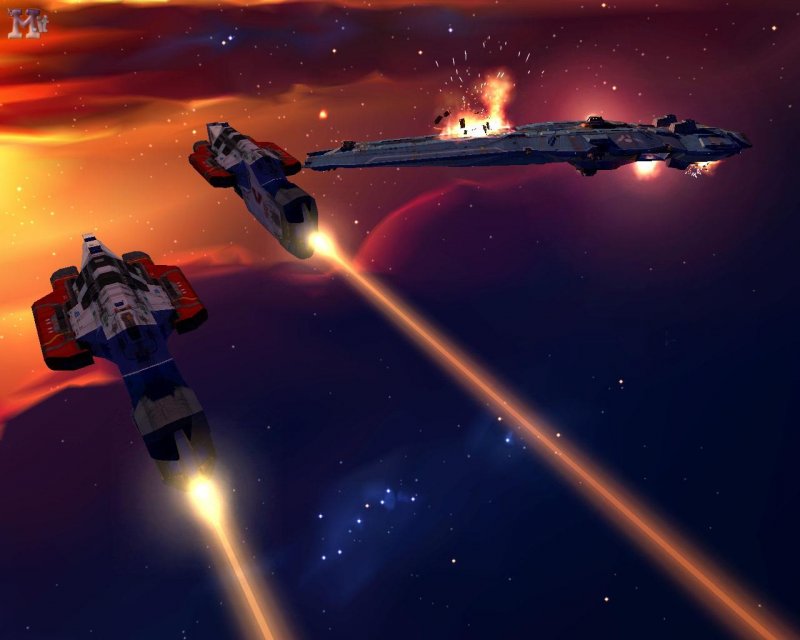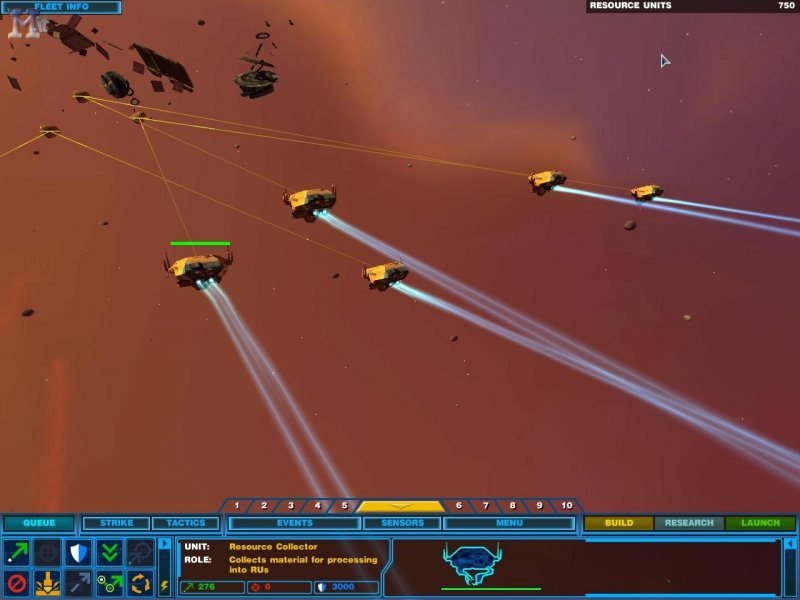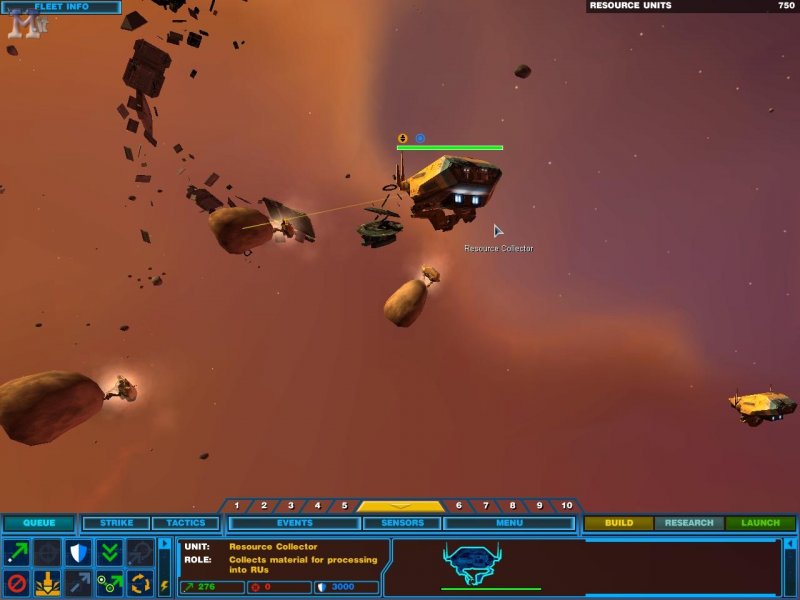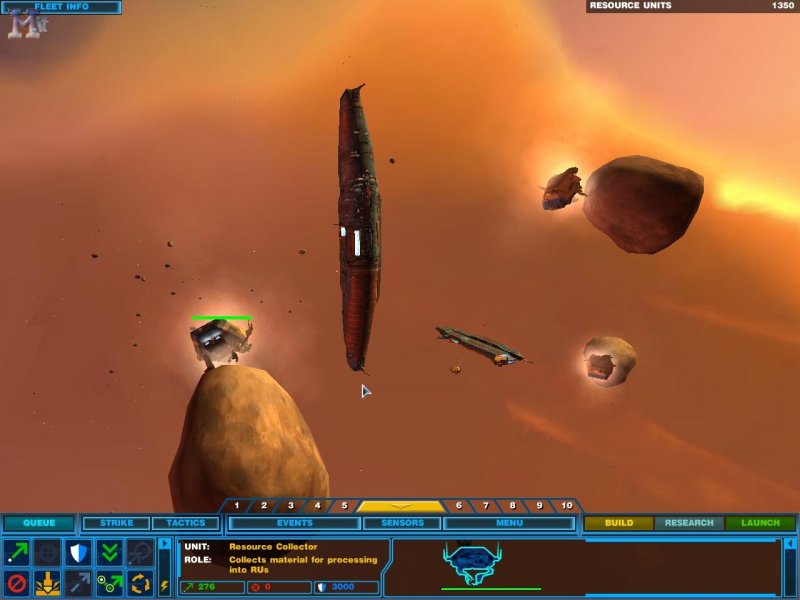Clik, Relic!
Fondata da Alex Garden e Luke Moloney nel 1997, la Relic, pur avendo sviluppato pochi titoli, ha saputo accumulare in pochi anni una grande stima sia da parte del pubblico che della critica. Il nome dei ragazzi di Vancouver resta legato al loro primo titolo, quell'Homeworld che, uscito nel 1999, ha rivoluzionato l'idea di RTS e si è imposto come pietra miliare grazie a un approccio innovativo, una grafica sontuosa e una giocabilità ancora oggi invidiabile.
Chiunque abbia giocato ai tempi con questo strategico ambientato nello spazio non potrà dimenticare l'atmosfera ineguagliata, epica, "galattica" che nulla aveva da invidiare a molti capolavori della fantascienza cinematografica o letteraria. Homeworld: Cataclysm, un'espansione stand-alone, fu affidata ai Barking Dog Studios: se possible fu un successo superiore all'originale: limandone i difetti -seppur con una trama meno epica e avvincente -e migliorandone ulteriormente l'aspetto tecnico i Barking Dog hanno prodotto un piccolo capolavoro.
Infine i Relic, prima di dedicarsi di nuovo a Homeworld, hanno tenuto fede alla loro fama di casa talentuosa e creativa con l'originale Impossible Creatures.
M.it: Con Homeworld avete creato un universo coerente con la tradizione della space opera ma al contempo molto originale. Quali sono state le vostre principali fonti d'ispirazione: ci sono artisti o scrittori che hanno influenzato il vostro lavoro?
Dan Irish: Tra le nostre influenze ci sono per gli illustratori: Chris Foss, Peter Elson, John Harris e Syd Mead. Il mondo dei manga e degli anime in generale, Katsuhiro Otomo e Shiro in particolare. Tron, Blade Runner e Guerre Stellari nel cinema. Infine la musica di Brian Eno, Bangra, la musica tradizionale islamica e la musica classica.
M.it: Homeworld 2 continua gli eventi narrati nei precedenti episodi della serie o si tratta di una storia completamente nuova?
D. I.: Homeworld 2 riprende a seguire l'epica lotta degli Hiigariani e del loro leader Karan S'jet. Molte delle loro tribolazioni sono giunte a termine una volta che hanno fatto ritorno a Hiigara (il loro mondo natale n.d.R.), ma il destino sembra accanirsi contro gli esiliati. Dal centro della galassia arriva un nuovo e più potente nemico per gli Hiigarani, un nemico che misteriosamente possiede il potere degli Antichi. Homeworld 2 si concentra su una variante del pellegrinaggio della Nave Madre e del suo equipaggio: questo viaggio porterà gli Hiigariani nelle regione più antica della galassia a confrontarsi con un nuovo nemico ma soprattutto a scoprire la verità dietro il loro esilio. In Homeworld gli Hiigarians lottano per la loro casa. In Homeworld 2 reclamano il loro destino. Non è necessario che il giocatore conosca gli eventi narrati in Homeworld e in Homeworld: Cataclysm. Tutto ciò che serve sapere è contenuto in Homeworld 2. Ovviamente se sei un appassionato della saga sarai sorpreso dai mille particolari e dagli intricati dettagli con cui abbiamo intessuto la trama per legarla agli episodi precedenti.
M.it: Homeworld è stato una pietra miliare nella storia degli RTS essendo il primo ad implementare un approccio totalmente tridimensionale al gioco. Ma ugualmente ricevette qualche critica per una certa tendenza a ricalcare troppo fedelmente la tradizione di questo genere (accumula risorse, sforna mezzi, scagliali contro il nemico). Quali elementi avete inserito in questo nuovo episodio per rendere l'azione più varia?
D. I.: Prima di tutto i controlli sono molto più facili. Ciò non vuol dire che sono più semplici quanto, piuttosto, maggiormente intuitivi e immediati da usare. Ci sono un mucchio di nuove opzioni che richiedono un'interfaccia a schermo, ma ci siamo assicurati che -soprattutto per i principianti -tutto ciò che serve sia sempre a schermo quando necessario.
Se fate attenzione agli screenshot vedrete che ci sono degli help a schermo che descrivono esattamente ciò che ogni unità, livello di ricerca, sottosistema o arma fa. La cosa più importante è che l'help rende chiaro come usare l'elemento in questione.
Abbiamo incluso dei comandi, attivabili col tasto destro, sensibili al contesto per rendere maggiormente immediato l'ordine di attaccare o scavare poiché tu puoi cliccare dove vuoi che l'unità vada ed essa sarà abbastanza intelligente da calcolare come arrivarci da sola, anche in un ambiente tridimensionale.
Queste sono solo alcune dei miglioramenti che abbiamo ottenuto per quanto riguarda i controlli.
Una delle maggiori novità rispetto al primo episodio è che l'interfaccia a schermo può essere ridotta dal giocatore. I Build Manager, Launch Manager e tutte le informazioni che servono per giocare a Homeworld 2 sono a schermo, non in menù separati. E se non ti interessano in quel momento puoi nasconderle per ottenere un'immagine del gioco a tutto schermo. Non abbiamo voluto perdere l'immersività di Homeworld costruendo una nuova interfaccia. Dopo un paio di missioni il giocatore potrà padroneggiare l'interfaccia senza incertezze: il successo per il completamente del gioco dipende da questo.
M.it: Seguendo l'esempio di Homeworld in questi anni molti RTS sono stati ambientati nello spazio: quale è la tua opinione riguardo a questi cloni? Avete trovato qualche idea che vi sarebbe piaciuto inventare voi? E in generale i giochi di strategia in tempo reale sono un genere morto e se no quali gli elementi che fanno tale un grande RTS?
D. I.: Ho giocato a un mucchio di RTS in questi mesi , del resto sono il mio genere preferito. Ovviamente abbiamo visto e imparato molto dai titoli usciti dopo Homeworld ma nessuno di essi è riuscito a catturare l'essenza del nostro gioco, secondo me. L' RTS è una grossa fetta del mercato dei giochi Pc, ma Blizzard, Ensemble e EA (C&C) hanno di gran lunga la quota maggioritaria: nonostante questo Homeworld è lo stesso uno dei titoli più riconoscibili.
M.it: Riguardo Homeworld 2 avete parlato di "evoluzione piuttosto che rivoluzione". Ci puoi spiegare meglio questa "filosofia"?
D. I.: Homeworld 2 è un'evoluzione, non una rivoluzione. Ci sono un mucchio di grandi cose che avremmo voluto implementare in Homeworld per ridurne i punti deboli o esaltare quelli forti. Con questo sequel abbiamo voluto portare Homeworld a un nuovo livello. E' sempre difficile sviluppare un nuovo concept e una nuova tecnologia allo stesso tempo, così questo progetto dimostra che possiamo sempre migliorare un concept esistente in un modo che rafforzi la visione originale.
M.it: L'engine del gioco è totalmente nuovo: quali sono le migliorie grafiche? Vedremo mai (magari in Homeworld 3...) missioni ambientate sulla superficie di pianeti?
D. I.: Probabilmente no, ma non si può mai dire. A volte gli scenari più complessi non sono necessariamente i più divertenti.
M.it: Quali novità per il multiplayer? Qualche nuova modalità di gioco rispetto ai prequel? Qual'è il vostro rapporto con la community? State pensando di aggiungere un editor di missioni o di astronavi?
D. I.: Per quanto riguarda il multiplayer ci saranno le stesse modalità di Homeworld, variazioni sul tema Deathmatch. I fans hanno supportato alla grande lo sviluppo del gioco in tutti questi quattro anni di sviluppo e speriamo siano soddisfatti al rilascio del prodotto. Un editor di missioni è possibile ma non ci sono programmi definitivi in merito. Rilasceremo un annuncio a breve.
M.it: With Homeworld you've created a universe in vein of space opera's tradition but original too. Which are your main sources of inspiration: have any artists or writers influenced your work anyhow?
Dan Irish: Our influences include: art: Chris Foss, Peter Elson, John Harris, Syd Mead anime: Manga, Katsuhiro Otomo, Shiro movies: Tron, Blade Runner, Star Wars music: Brian Eno, Bangra, Traditional Islamic, Classical Western
M.it: Is this new episode a sequel of the previous storyline (with the same characters, races and so on) or a brand new one?
D. I.: Homeworld 2 continues the epic struggle of the Hiigarans and their leader Karan S'jet. Many thought their hardships would end when they returned to Hiigara, but fate would not be so kind to the Exiles. From the Inner Rim, the Hiigarans face a new and bitter enemy wielding the power of the ancients. Homeworld2 focuses on the valiant journey of the Mothership and its crew. This journey takes the Hiigarans into oldest regions of the galaxy to confront their new foe and learn the truth behind their exile.
In Homeworld, the Exiles reclaimed their home. In Homeworld 2, they reclaim their destiny.
There is no requirement that you understand or know about the story in Homeworld or Homeworld: Cataclysm. Everything is contained in Homeworld2 that you'll need to know and enjoy this chapter of their epic saga. However, if you are familiar with each story, you'll be surprised at the intricate details we've woven into the current story that reference the past.
M.it: Homeworld was a RTS milestone that started a real tridimensional approach in this kind of videogame. But at the same time that expose the game to criticism... for example someone told Homeworld did that but just uses the usual gameplay of the other RTS's. Have you added any elements in this new episode making the action more varied?
D. I.: First of all, the controls are a lot easier to use. I wouldn't characterize them as simpler, but more intuitive and easier to understand. There are a lot of new options, which require an interface, but for the newcomers, we've ensured that everything you need to play the game is onscreen when you need it. If you take a look at the screenshots provided, you'll see that there is on- screen help text describing exactly what each unit, research level, subsystem or weapon does. Most importantly, the help text makes it clear how to use them.
We've also included right-click Context Sensitive Commands also make simple tasks like moving, attacking, harvesting easier to execute because you can click on where you want the unit to go and it'll be smart enough to figure out where to go, even in 3D. These are just a few of the improvements that we've made to the controls, but the best way to see how far this game his pioneered a genre is to play it.
Another major improvements over Homeworld, Homeworld2 features a completely on-screen user interface that can be minimized to any degree the user wishes. The Build Manager, Launch Manager, and all of the information that you'll need to play the game is on- screen. And, if you don't want to see it, you can minimize it to achieve a "clean screen." We didn't want to loose the immersive factor of Homeworld by using this new interface. Once you play a few minutes with the interface on, you'll get used to seeing the information that you need and know where to find it. After a mission or two, you'll grow less dependent on it.
M.it: Following the example of Homeworld in these years many RTS have been set in space: what's your opinion about them? Have you found any enviable ideas? And generally speaking is RTS a dead genre or if not which are the most important elements to make great a RTS?
D. I.: I've seen a lot of RTS games, as they are my favorite type of game. However, we've looked and learned from the games that came out after Homeworld, but none of them captured the essence that Homeworld did, in my opinion. The RTS genre is still a huge market segment, but Blizzard, Ensemble and EA (C&C) have the vast majority of the market share, but Homeworld is still one of the most recognizable.
M.it: About the H2 you've talked of evolution instead of revolution. Could you explain in a better way this "philosophy"?
D. I.: Homeworld2 is about evolution, not revolution. There are so many great things about Homeworld that we wanted to really improve upon its weaknesses and maximize its strengths. Working on a sequel and interating the technology was a good decision for Relic since we're known for Homeworld. Taking Homeworld to the next level is what this game is about. It is always challenging to develop a new concept and new technology at the same time, so this project proves that we can always improve on an existing concept in ways that strengthen the original vision.
M.it: The game's engine is totally new: which are the future technical improvements in it? Will ever see (maybe in Homeworld 3...) any missions on the planets' surface?
D. I.: Probably not, but you never know. Sometimes the most complex scenarios are not the most fun.
M.it: What about the multiplayer? Any brand new gamemodes compared to the previous episode? What's your relationship with the community? By the way are you thinking of adding an editor for the missions or for the spacecrafts?
D. I.: As for multiplayer, there are the same game modes as Homeworld, variations of Deathmatch. The fans have been very supportive of this project over the entire four years of development and we're hoping that they're pleased with the release of this product. A mission editor is possible, but the plans are not finalized, yet. We'll be making an announcement about this shortly.
L'atterraggio di Homeworld 2 sugli scaffali terrestri è ormai imminente. Il primo episodio e la successiva espansione hanno rappresentato una piccola rivoluzione nel mondo degli strategici in tempo reale. E' comprensibile, quindi, che il seguito abbia generato tante aspettative tra i giocatori di mezza galassia.
Nell'attesa di tornare ai comandi della nostra flotta abbiamo fatto quattro chiacchiere con Dan Irish, Produttore esecutivo di Relic.


